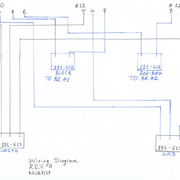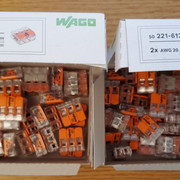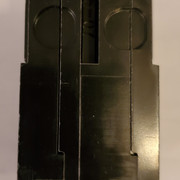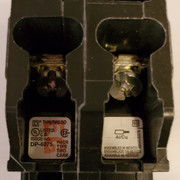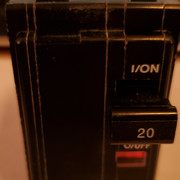Mike,
You brought up a very good point.
I only have one dual function, QO, 20A, Single-pole breaker (
https://www.homedepot.com/p/Square-...I-and-GFCI-Circuit-Breaker-QO120DFC/204844647) in a non-bathroom area. The circuit is a dedicated circuit and does not share neutral with any additional circuits.
All other breakers in the home are of regular type (thermal-magnetic) without any GFCI/AFCI protection.
Reading through nuisance tripping of AFCI breakers I came across the following article:
https://inspectapedia.com/electric/AFCI_Nuisance_Tripping.php
The way I understood, nuisance tripping is dependent upon the connected load, otherwise shared neutrals could be OK. As written in the subject article, nuisance tripping occurred on an AFCI circuit where a coffee maker was connected, sharing the neutral with a “string of electrical receptacles”. Another three additional AFCI breakers were installed in the same electrical panel, with one of them being in active use. This one breaker also had a string of receptacles connected, powering lighting and computer equipment – did not have nuisance tripping. The way I understood, in both cases neutral wire was shared among the receptacles, otherwise what would make them be called a
string of receptacles? As far as the multi-wire branch circuit discussed in this topic, apart from the AFCI jazz, I think the wiring diagram is correct. There is nothing connected to the two 120V legs except for the two bathrooms' receptacles. Please confirm if my reasoning is correct.
P.S.
By sharing (multi-wire branch circuit) I mean a scenario as shown in the image below where the load power (RED or BLACK) wires are
separately tied together and all neutral wires are also tied together. Each receptacle is sharing either the RED wire power leg or the BLACK wire power leg. All of them are tied to the same neutral wiring. I have also provided helpful links on AFCI (for curious people).
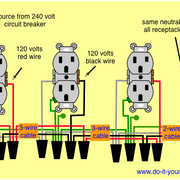 http://apps.geindustrial.com/publibrary/checkout/DEA-635?TNR=Brochures|DEA-635|PDF&filename=DEA-635.PDF
https://apps.geindustrial.com/publibrary/checkout/DET-719?TNR=Application and Technical|DET-719|generic
http://apps.geindustrial.com/publibrary/checkout/DEA-635?TNR=Brochures|DEA-635|PDF&filename=DEA-635.PDF
https://apps.geindustrial.com/publibrary/checkout/DET-719?TNR=Application and Technical|DET-719|generic .
.




